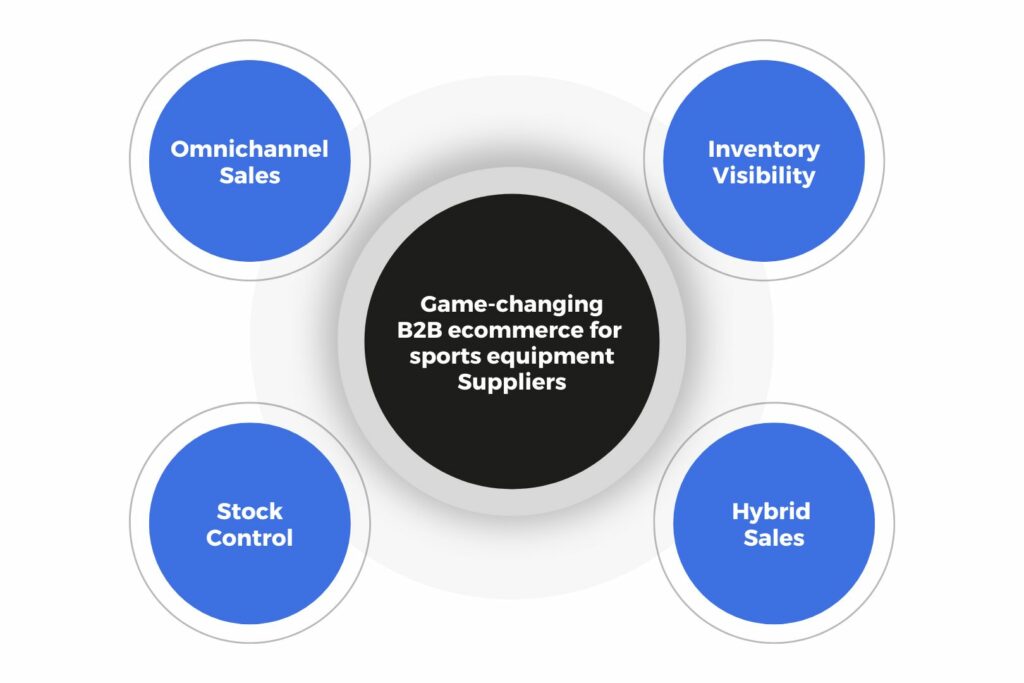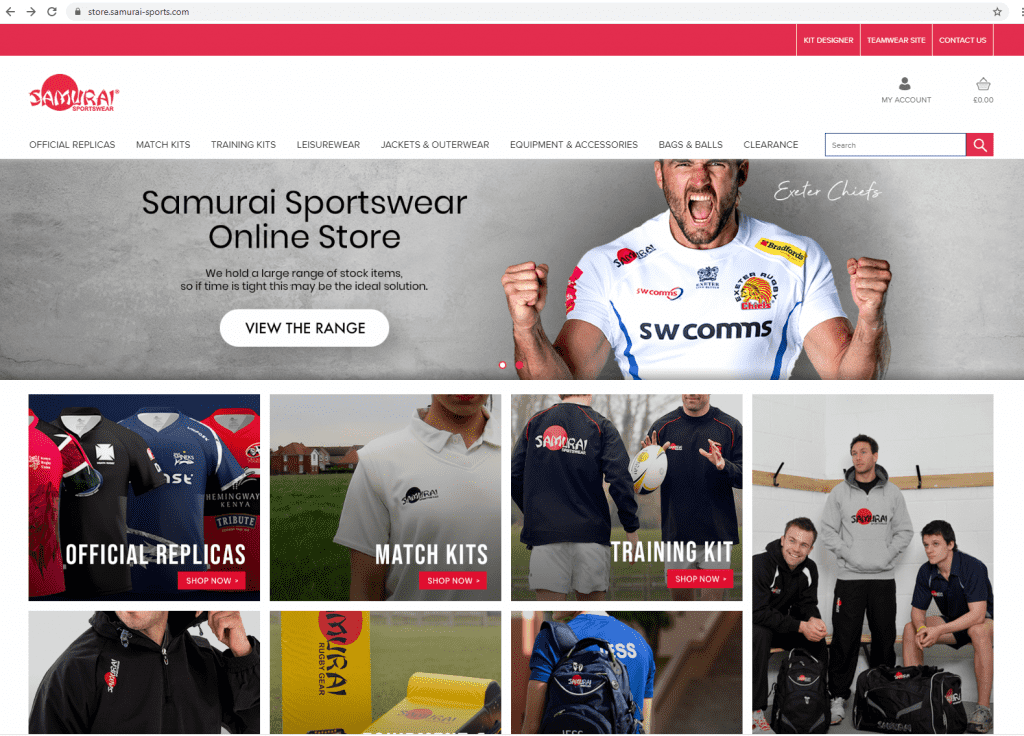Although the sports equipment supply sector has shown resilience, inflation and economic uncertainty have caused a downturn in confidence. Across the board there are mixed views on performance, with some anticipating growth while others are lowering their predictions.
Overall, nine out of 10 sporting goods leaders expect sales and margins to remain stable or improve this year. However, most also believe that inflation, inventory levels and the cost of capital are continuing challenges. Overstocking is also likely to remain a persistent problem with inventory peaks increasing. As a result, retailers are discounting sports goods by up to 55%, making improved planning a top priority this year.
As more people choose healthier and more active lifestyles demand for home gyms and fitness centers has increased. More and more people are looking for high quality sports equipment for personal use. Sports equipment is also evolving to satisfy the growing market for recreational sports and fitness in indoor settings. Generally, changing patterns of sports activity are creating significant growth potential.
Innovation is a priority to keep pace with shifting consumer preferences, manage supply chains and streamline operations. In addition, sustainability requirements are driving the need for improved transparency across the sector. Overall, those adopting an omnichannel sales approach are in the best position to take advantage of increased demand.
Cloudfy is purpose designed for complex business to business (B2B) sales in the sports equipment supply sector. Manufacturers, distributors and wholesalers can streamline and simplify their operations by integrating an effective and scalable B2B ecommerce platform with key back-office systems. As more consumers search for products online, it’s an ideal time to work in partnership with retailers and offer D2C sales.
When margins are tight, the business case for Cloudfy is clear. For almost a decade the team has refined the platform’s extensive pre-built features, integrations and extensions. As a software as a service (SaaS) solution leading-edge B2B ecommerce functionality is available for a straightforward monthly subscription.
You’ll have everything you need to simplify your B2B online sales in a one-stop-shop solution. You don’t need to look for third-party providers to meet your unique requirements. All your needs are met from custom development and site set up to hosting and security.

Sports equipment sector challenges
There are increasing opportunities for sports equipment suppliers to take advantage of the power of business to business (B2B) ecommerce.
Consumers buying online
Despite the continued importance of in-store sales, consumers are much more comfortable with online purchasing. ‘Athleisure’ is bringing together fashion and sports and changing the ways products are designed and bought. Almost a quarter of those shopping for sports goods online say they value its convenience and around-the-clock availability.
This year around 18% of sports goods shoppers will buy through subscriptions, in a similar way to the fashion and cosmetics sectors. This is only about 11% behind grocery subscriptions. Many regularly buy the same products and need regular replacements according to their sporting activities. Stock level visibility is therefore a high priority for businesses in the sports equipment sector.
Shorter timescales
Around the world consumers are keen to receive their orders quickly and cheaply. Free delivery offers are encouraging more people to choose online purchasing. To reduce distribution and delivery costs and speed up the fulfillment process inventory visibility throughout the supply chain is a top priority.
Bargain hunting.
Consumers are tempted by special offers, and sports equipment suppliers can work with online and in-store retailers to keep stock moving. Abandoned basket automations and personalised discounts can help sports equipment suppliers drive online sales and build a loyal customer base.
Hybrid selling
Eight out of 10 sportswear consumers and sports equipment users say they buy online at least some of the time. However, the sector has a ‘try before you buy’ emphasis because pricing, suitability and comfort are all high priorities. Once consumers find their favorite products they are likely to remain loyal and happy to buy replacements online. One option worth considering is a hybrid B2B and direct to consumer (D2C) approach to optimize sales. Distributors and wholesalers can offer click-and-collect, AR-powered virtual try-ons and loyalty programs alongside their retail partners.
Your game-changing B2B ecommerce strategy for sports equipment supply
B2B sporting goods buyers expect a frictionless ordering process so this is the ideal time to upgrade your online ordering offer.

Flexible ordering
Buyers want streamlined and flexible ordering and you must respond with quick and easy solutions, even outside standard working hours. Even your long-standing customers are likely to move to other suppliers if these needs aren’t met.
A simple but powerful online sales portal makes ordering faster and more efficient. Integration with key business systems allows you to provide personalised customer experiences and simple online self-service options. By creating a site that’s fully responsive for mobile devices even large and complex orders are easy to place.
Personalized catalogs
You can maintain all your complex product, pricing and customer information in your enterprise (ERP) system. You can keep the details of thousands of stockkeeping units (SKUs) and add specifications, user guides, videos, and customer reviews. Integration with your B2B ecommerce platform allows you to support multiple product and price variations within your online ordering process.
Efficient business workflows
As soon as a customer places their order online the information can pass straight into your accounting, warehouse management (WMS) and fulfillment workflows. You’ll reduce manual data entry to save time and improve accuracy. Updating stock levels and customer records in near real time also improves customer service and minimizes the risk of out-of-stock orders.

Inventory visibility
Customers expect a fast and efficient service, so reliable information about your stock levels is essential. Integration with your ERP and WMS makes sure everyone can see the latest and most accurate information. With a customer ordering app and field sales representative app there’s no limit to anytime, anywhere sales. You can email your stock-sensitive customers when product numbers are low and when key items are back in stock.
Easy reordering
When customers order the same extensive list of products again and again they will appreciate fast and easy purchasing experiences. You can simplify high-volume repeat ordering with user-friendly tools such as Excel order uploads and emails, order templates and favorites lists.
E-procurement solutions
For your larger customers you can become part of their procurement process with PunchOut integration. You can provide access to a tailored catalog and pricing directly within their own e-procurement systems. They can browse your product range and place orders directly once their internal approvals are complete. Alternatively, you can offer electronic data interchange (EDI) to speed up fulfillment and streamline order processing.
Case Study: Samurai Sportswear
Samurai Sportswear specializes in manufacturing custom made teamwear and leisurewear for sports clubs, schools and universities around the world. The company wanted to improve its club shop service and integrate its B2B ecommerce platform with its Sage 200 accounting system.


Case study: Hotlines
Hotlines is a distributor and wholesaler of cycling goods. Their extensive product range includes bikes, sportswear and cycling wellness products. They chose Cloudfy as their B2B ecommerce solution partner because of its prebuilt features and seamless integration with Oracle Fusion and Fluent Commerce.
Changing the sports equipment supply game with Cloudfy
B2B ecommerce solves many of the challenges you face in your sector by minimizing the bottlenecks that can slow business growth. Cloudfy is easy to use and purpose designed for complex B2B sales.
You can simplify and streamline workflows and save time and money with business systems integration. Most importantly, you’ll improve customer experiences by providing high quality product information, specifications and technical data. You’ll deliver fast and efficient solutions to your customers’ procurement needs with automation, reliable inventory information and accurate pricing.
Your sports equipment supply business is unique and your ecommerce solution should be too. If you’ve already tried to find a single solution that meets all your needs, you’ll know this often involves compromises. Instead, you can work with experienced ecommerce professionals who understand the complex world of sports and sporting goods.
Find out how you can change the game in the sports equipment supply sector with a B2B ecommerce solution from Cloudfy. Book a free demonstration today.
Frequently Asked Questions
Yes. Whether you make, buy or sell sports equipment, sportswear or accessories, it’s important to keep pace with customer expectations. You need accurate inventory data, reliable forecasting and usable information about customer behavior. All this is possible when you integrate your B2B ecommerce site with your back office business systems.
If you currently rely on manual data entry and order processing you are probably missing sales opportunities. Re-entering customer order data often introduces errors that will slow down fulfillment and upset customers. A B2B ecommerce solution streamlines and simplifies your sales processes. Integration with your ERP system maintains data accuracy and allows you to automate workflows. You can save time and money and free up resources for more value-added activities.
There are certainly a lot of options for online sales in the sports equipment supply sector. Your requirements are unique, whether it’s your first ecommerce venture, a rebrand, selling directly to consumers, or reaching new audiences. Whatever your plans you’ll need an experienced implementation partner to make it all happen.
The ideal approach is to work with data analysts and designers, developers and digital strategists with tried and tested knowledge and expertise. Look for a multi-skilled team that will work with you to create an ecommerce site to transform your business. Ask about digital marketing, customer engagement, content management and IT requirements.
Yes, you can add a valuable additional revenue stream to your existing trade-only channels. Setting up a hybrid ecommerce site for B2B and D2C sales should be straightforward. Ask platform providers whether they can configure your B2B ecommerce site to provide a guest checkout experience alongside your trade-only customers’ login.





